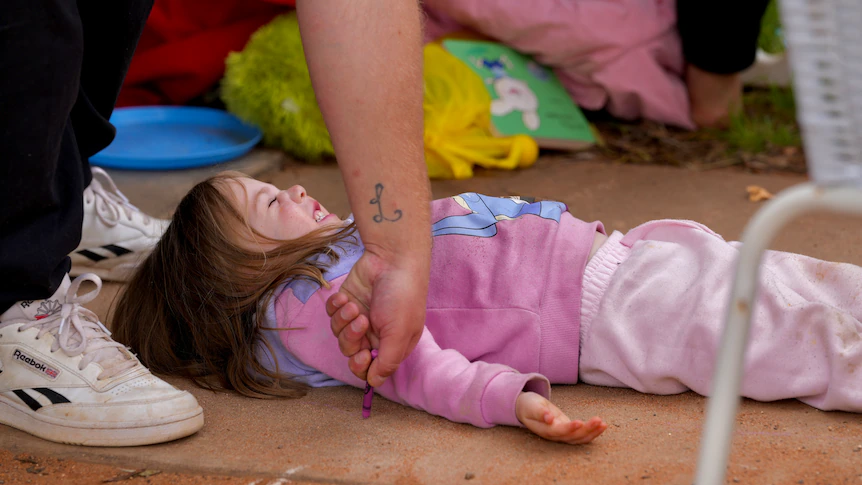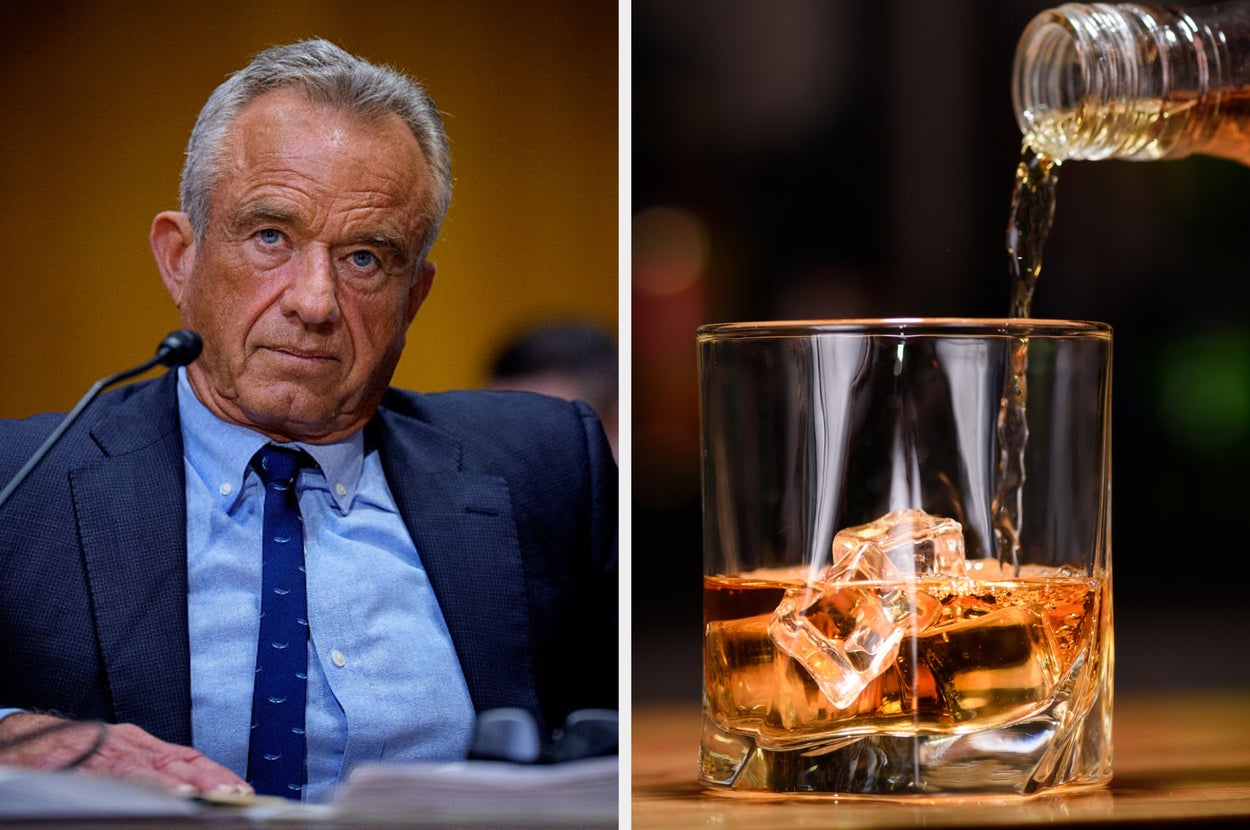By Bill Ormonde,Joanna Woodburn
Copyright abc

The NSW government is being accused of a cover-up following revelations a key government body sat on a report into lead dust that was “poisoning” children for nearly four years and tried to keep its release quiet.
The accusations came after Mudgee resident Jayne Bentivoglio received a tip-off in 2023 after the Bowdens silver mine, which would also produce lead and zinc, was approved near her farm.
Ms Bentivoglio had discovered a report, prepared for the NSW Environment Protection Authority (EPA) to examine the sources and exposures of lead at Broken Hill, had recently been published.
She then submitted Freedom of Information requests to the NSW government and scoured through the documents at state parliament.
“I found emails between government agencies that suppressed the document. [They] said that they were going to publish it at some stage but not just yet,” Ms Bentivoglio told 7.30.
“It’s such an important scientific document. To sit on something like that is just atrocious.”
The Environmental Lead Risks at Broken Hill, New South Wales, Australia: Sources, Exposures and Forward Solutions report had been commissioned by the EPA and prepared by professor of environmental science and human health at Macquarie University, Mark Taylor.
He gave it to the EPA in December 2019, and it was published in October 2023.
It found that current and legacy mines, as well as Broken Hill’s central ore body known as the Line of Lode, were the key sources of lead contamination and were contributing to high levels of the substance in children’s blood.
The report recommended a suite of measures, including setting trigger levels for lead in dust which would require mines to keep these emissions below set thresholds.
“It’s often been touted by mining companies that the lead is naturally occurring,” Mark Taylor told 7.30.
“Of course the lead is naturally occurring because there’s an ore body that we mine, but the distribution and dispersal around a mining town is not naturally occurring.
“Key sources are current and legal mining activities, legacy sites around town, in particular, the Line of Lode and also lead sources inside people’s homes and in the yards, like garden soil.
“There are some trigger values set for some operations around the nation, but there’s no formal values for lead in dust, and that for me, that’s one of the key matters for consideration by the regulatory authorities.”
‘Kids playing in poison’
Mr Taylor said Broken Hill’s children are particularly at risk.
“It is from dust through ingestion,” he told 7.30.
“Those emissions, whether they’re coming from the Line of Lode or some current operations or a complete mixture of the two … when the dust gets agitated and gets remobilised into the air, those depositions land on hands and they ingest it through their hand-to-mouth behaviour.”
In a statement to 7.30 Broken Hill Mines, which bought one of the city’s mining operations in October 2024, said the report’s research was done “during a period when the mine was under different ownership and management”.
“Since taking ownership, Broken Hill Mines has been focused on operating the Rasp Mine responsibly, meeting the strict environmental requirements set by the NSW government, and contributing to the broader whole-of-community effort to reduce lead exposure risks.”
7.30 contacted the city’s other mining operator, Perilya, but did not receive a response before publication.
Since the 1990s, the NSW government has spent millions of dollars in Broken Hill monitoring blood lead levels and trying to protect people, particularly children, from further exposure.
“If a child does have high blood lead levels [they can cause] cognitive issues, impair speech and learning [and] cause drastic effects on their health,” Lavinia Henderson from Maari Ma Aboriginal Health Corporation said.
She said poor housing in the city, particularly for Indigenous residents, made people even more vulnerable.
The family toll
Ethan Pearce and his family live around 500 metres from Broken Hill’s Line of Lode, which is the ore body that dissects the city.
His son and daughter are among the children who have had elevated levels of lead in their blood.
His daughter Nova, three, and his one-year-old son Atlas have been tested as part of the screening program run by Maari Ma Aboriginal Health Corporation.
“Nova’s first test was a little bit high, but it wasn’t overly high, so she had to come back and get a few more tests done,” Mr Pearce told 7.30.
“Atlas when he was younger, he tested really high.
Remediation work was carried out at Mr Pearce’s house, which included replacing the topsoil to remove the lead-contaminated dirt.
He said it was something he was constantly aware of.
“Living in Broken Hill we’re always prone to having high lead levels purely because of the mines. All of the dust picks up the lead from the mines and it drops into our homes and into our gardens and into our yards,” he said.
“The only way you could really remediate it is constant replacement of soil, constant checking of any dust particles in your house, trying to make sure it all stays down.”
The alleged cover-up
Internal EPA emails and correspondence released to Ms Bentivoglio, and seen by 7.30, state that while the EPA wanted to publish the report about Broken Hill, several factors influenced its decision to hold off publication.
“The length of time between receipt of the report and publication may cause people to think that the EPA was attempting to hide something. This is not the case. Publication was delayed due to the winding up of the BHELP Steering Committee in 2020, COVID preventing appropriate consultation, and the response of the mining companies,” a governmental briefing note in 2023 said.
Other documents seen by 7.30 suggested the EPA had concerns about how the report would be received.
One stated that the report contained recommendations that may have been “unpalatable to the mining companies and the community in Broken Hill”.
In several others, staff discussed how they wanted to avoid media attention when the report was released.
Other emails sent in 2023 explained the report had not yet been published because of “discomfort among the mining companies” about “what might be expected of them” and they “would prefer we didn’t publish it”.
Mr Taylor, who now also works for the NSW Department of Climate Change, Energy, the Environment and Water, said he was “disappointed” by the length of time it took the EPA to publish his report.
“Every scientist likes their science to be out in the public domain because I did that science for the very purpose of expediting and improving outcomes for children in Broken Hill,” he said.
NSW Environment Protection Authority CEO Tony Chappel took on the role in 2022. 7.30 has seen an email from September 2023 which stated that he wanted the report released.
“I’m very disappointed to read those,” Mr Chappel said.
“It’s not reflective of our culture. I think that’s a mistaken view. We do need to engage with industry, and we do that deeply when we are seeking to orchestrate change and enable change.
“The mining sector is no different in that respect, but no industry will ever dictate the terms of the release of information that’s relevant to the community and nor should they. I am very committed to transparent provision of real-time information.”
While the EPA was deliberating the timing of the report’s release, a major pillar of its efforts to protect Broken Hill children had run out of funding.
The Broken Hill Lead Environment Program (BHELP), which delivered blood screening, interventions and mitigation measures for residents, was established in 2015 and administered by the EPA.
Its funding expired in June 2020, and the program was replaced by the Broken Hill Lead Response Group in early 2023.
“Whilst the report in its final form was delayed, there was no delay in the health protection and environment protection work that it facilitates and recommends,” Mr Chappel told 7.30.
“One of the recommendations in the report is some new science around particular contaminant levels in dust and setting trigger and response levels there.
“We’ve commenced that work, but it is some new science for us. So, we’ll get that peer reviewed and then we’ll implement that going forward.”
“While BHELP has had some success, blood lead levels in children have not significantly improved in the last 10 years and are unlikely to improve without a more coordinated whole-of-government response that potentially includes more widespread remediation,” a government briefing document in 2023 said.
In 2022, 39 per cent of children under five in Broken Hill had blood lead levels that exceed National Health and Medical Research Council guidelines.
The EPA had provided funding to Broken Hill’s Maari Ma Aboriginal Health Corporation, which delivered blood screening and intervention programs.
Staff say reduced funding means they are now limited in what support they can provide.
“It’s really hard because I can’t promise them anything,” Maari Ma’s lead program leader Renee Morrison told 7.30.
“All we can do is what we’re doing with the education, the incentives. It feels like we’re just treading water and not really getting anywhere.
Fears over Mudgee mine
Within the EPA, an email seen by 7.30 expressed concern that history may repeat itself in the Mudgee district.
“I noticed in the media clips this morning … that there is talk of a new lead mine opening up near Mudgee and Planning is recommending that children’s blood leads be tested. Do you know anything about this? I’m partly curious but also keen to avoid another Broken Hill situation from occurring,” an email from the EPA to NSW Health said on March 21, 2023.
Ms Bentivogolio does not believe the assurances that the Bowdens project won’t affect public health.
The mine is proposed to be built near the village of Lue, which is about 30 kilometres east of Mudgee.
“It will be no different to what’s happening in Broken Hill,” Ms Bentivoglio said.
“We should have had access to that [report] so that we could say to government: ‘Look what you’re doing in Broken Hill. You’ve got to fix up your own mess there. Don’t bring that mess here to Mudgee. We don’t want it here.'”
Mr Taylor disputed this claim and said that while dust was a common factor between Broken Hill and the Bowdens mine, the two sites could not be compared because of differences in the scale of the operations, their proximity to residents and Broken Hill’s legacy of mining.
“I just don’t think we can compare Broken Hill other than the fact that there are people there and there’s a mine there,” Mr Taylor said.
“It’s a complex site … it’ll be much simpler at Bowdens. It’s a completely different proposition.”
Bowdens Silver agrees with Mr Taylor.
In a statement, the company said: “Any attempt to link the Broken Hill report with the Bowdens Silver Project is factually incorrect and inappropriate.”
“The Broken Hill report could not be more unrelated to the Bowdens Project. Modern mining and processing methods, the lack of smelting, sealed transport of concentrates, environmental monitoring and controls, and the strict regulatory regime will prevent the lead related issues associated with Broken Hill.”
The approval of Bowdens silver mine was overturned in the NSW Supreme Court of Appeal in August 2024.
In July 2025, the company announced it had submitted its revised plans to the NSW Department of Planning, Housing and Infrastructure.
The NSW Minister for Planning Paul Scully declined 7.30’s request for an interview.
In a statement he said he understood the Lue community’s concerns.
“What happened in Broken Hill was due to decades of unregulated mining and is unacceptable but this situation is not comparable to the Bowden’s mine which underwent a full and thorough assessment and has strict monitoring requirements,” Mr Scully said.
Watch 7.30, Mondays to Thursdays 7:30pm on ABC iview and ABC TV



